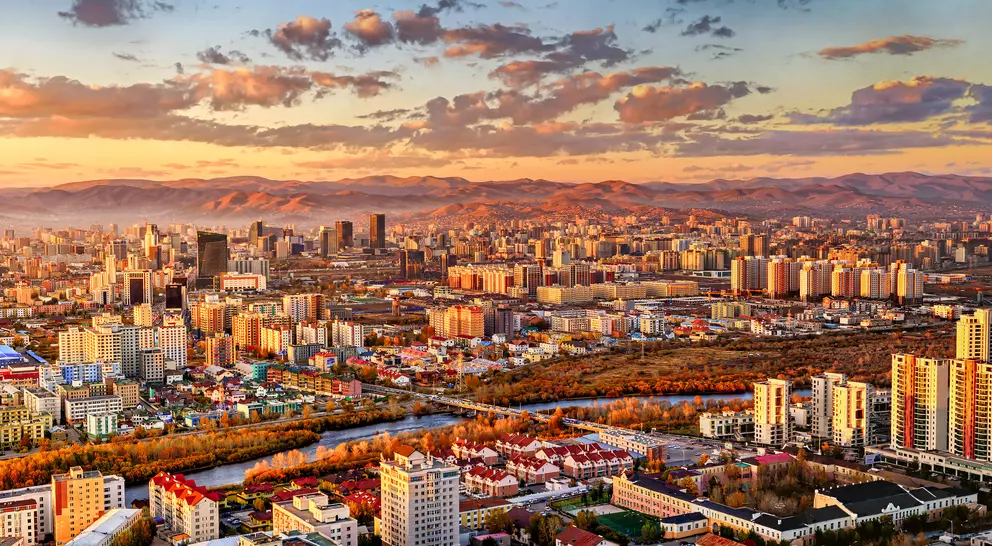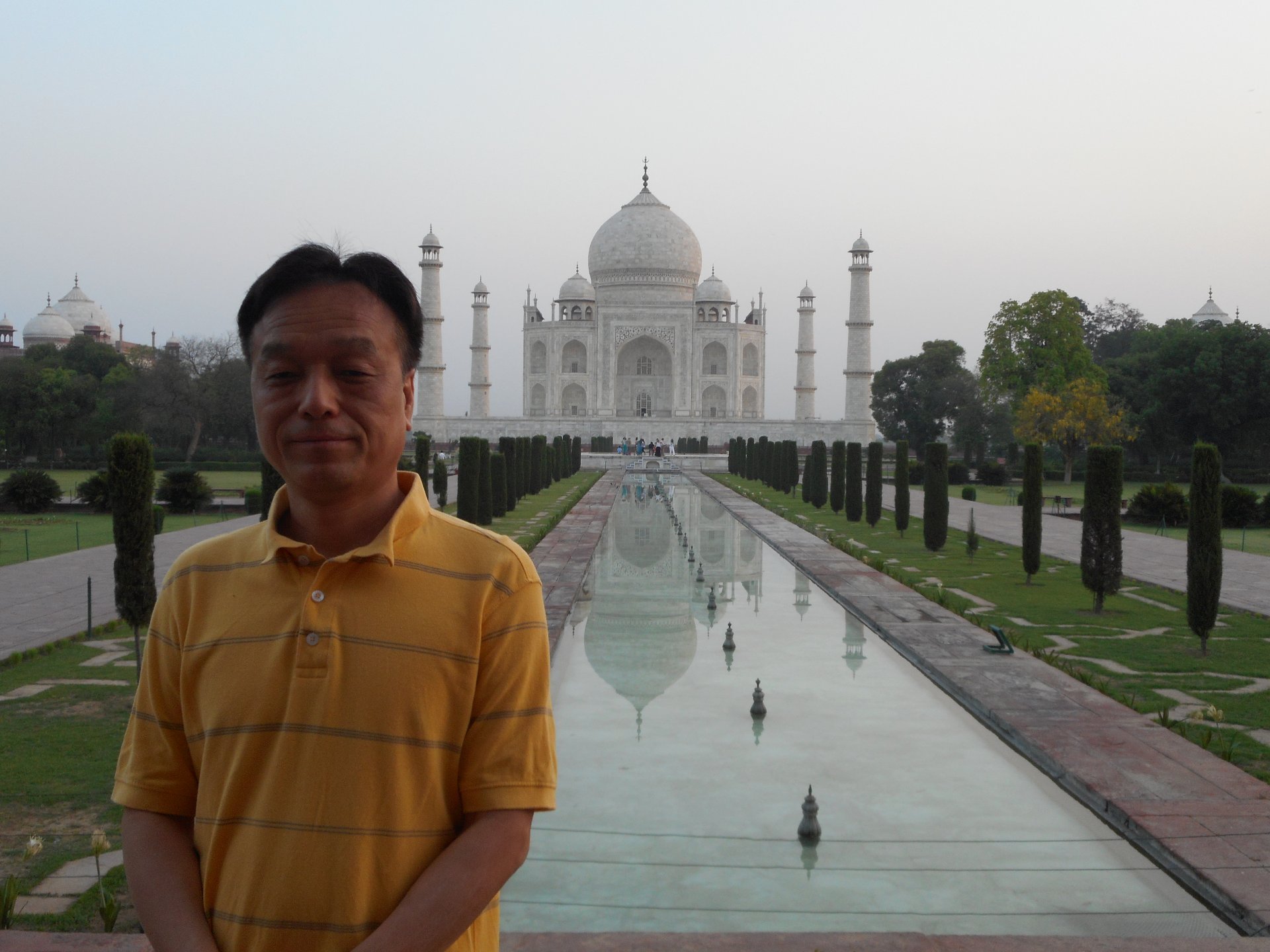US citizens can visit visa-free for up to 90 days; Canadians for up to 30 days. Your passport should be valid 6+ months past entry. Mongolia requires foreign visitors to be registered with Immigration; in practice, your hotel or tour operator usually files this online within 48 hours of arrival. Rules and online registration live on the Mongolian Immigration and eVisa sites, so double-check before you fly.
Discover Tailor-Made Mongolia Vacations
Vast steppes, nomadic traditions, and wild beauty in Mongolia.
Mongolia offers endless grasslands, rugged mountains, and the enduring culture of nomadic life. From the Gobi Desert to eagle festivals, travellers discover a land where adventure and tradition meet under the wide open sky.
Featured Highlights
- Ride camels across the Gobi Desert’s sand dunes
- Witness Naadam Festival’s sports of strength and skill
- Stay with nomadic families on the vast steppes
- Experience eagle hunting traditions in the Altai Mountains
- Discover dinosaur fossils and ancient history in the desert
- Relax at Lake Khövsgöl’s pristine mountain setting
Featured Mongolia Trip Ideas
Explore Mongolia’s wilderness and timeless traditions.Mongolia is a destination defined by open landscapes and deep cultural roots. The Gobi Desert reveals towering dunes, dinosaur fossils, and camel treks, while the steppe invites encounters with nomadic herders. In Ulaanbaatar, monasteries and museums tell stories of Mongol history. The Naadam Festival celebrates wrestling, archery, and horse racing, showcasing centuries-old traditions. Eagle hunting in the Altai Mountains offers a glimpse into Kazakh heritage, while Lake Khövsgöl provides a serene escape surrounded by forested mountains. For those seeking wilderness, culture, and authenticity, Mongolia promises a journey like no other.
Highlights of Mongolia
Don't see the
perfect trip idea?
Request a custom quote.
Turn your travel dreams into reality with Goway. Our customized vacations take travellers to all corners of the world.
What do Goway's travellers say?

Get to know Mongolia before you go.
Best Time to Visit
Mongolia is a land of vast steppes, rugged mountains, and time-honoured traditions, offering travellers extraordinary experiences in every season. Its landscapes and nomadic heritage are ever-changing, ensuring that no two visits feel the same, whether you arrive in the warmth of summer or the stark beauty of winter.
Summer (June to August) is peak season, with warm days and crisp nights ideal for hiking, horseback riding, and camping beneath endless skies. Nomadic families are on the move during these months, giving visitors an authentic glimpse into their way of life. July is especially vibrant with the Naadam Festival, where wrestling, archery, and horse racing take centre stage, celebrating Mongolia’s proud cultural spirit.
Autumn (September to October) transforms the land into a tapestry of gold and red, making it one of the best times for trekking and photography. The cool weather and lush meadows create perfect conditions for adventure seekers eager to explore Mongolia’s untouched wilderness.
Winter (November to February) offers a completely different perspective. Though the cold is intense, it also brings opportunities for dog sledding, skiing, and witnessing the resilience of nomadic families in snow-covered landscapes. This is a season for those who want to combine cultural immersion with thrilling winter sports.
Even spring (March to May), though less visited, reveals renewal across the land as herders welcome newborn livestock and the steppe awakens.
Whether you’re drawn to vibrant festivals, outdoor adventures, or cultural encounters, Mongolia is a destination that captivates in every season.
What do the experts say?
Did you know that Mongolia is the most sparsely populated country in the world? The number of horses is actually higher than the number of people. Mongolia is also home to several unique animals, like the snow leopard. You should also know that the Gobi Desert is the second-largest desert in Asia and the sixth-largest in the world.
I love Mongolia's vast, untouched landscapes, nomadic culture, and rich history. Mongolia's low population provides a sense of solitude and peace not found in most other countries.
I really enjoyed Mongolia's wide-open wilderness, an endless expanse where adventurous drives, hikes, and a nomadic lifestyle are the norm.
The Naadam Festival that takes place across the country on select dates in July is a must-see experience. This festival is one of the primary reasons travelers go to Mongolia and makes for the Summer months being the peak season for travel.
Places To Go
Handcrafted journeys to our most popular places to visit in Mongolia
Ulaanbaatar
Located on the bank of the Tuul River in north central Mongolia, Ulaan baatar is the country’s...
Located on the bank of the Tuul River in north central Mongolia, Ulaan baatar is the country’s capital and largest city. An independent municipality, Ulaan baatar is the cultural, financial, and...

Gobi Desert
The Gobi Desert, or the Gobi, is a large desert region in Asia, covering parts of north and...
The Gobi Desert, or the Gobi, is a large desert region in Asia, covering parts of north and northwestern China, and southern Mongolia. The largest desert in Asia, and the fifth largest in the world,...
Travel Styles
Explore Mongolia by Travel Type
Ways to Travel
Discover your perfect travel style—crafted for every dream and journey.

Themes
Immersive adventures shaped by passion, such as food, culture, wellness, and wild discovery.

Ways to Travel
Discover your perfect travel style—crafted for every dream and journey.

Themes
Immersive adventures shaped by passion, such as food, culture, wellness, and wild discovery.
Frequently Asked Questions
Do I need a visa or special permits to enter Mongolia?
What language is spoken locally? How widely is English understood in Mongolia?
Mongolian (Khalkha) is the official language, commonly written in Cyrillic; you’ll also see increasing use of the traditional vertical script on signs and documents. English is most common among younger people and in tourism in Ulaanbaatar, but it thins out quickly in the countryside, so a few Mongolian phrases go a long way.
What are the must-see attractions in Mongolia?
Think big skies and bigger horizons. The Gobi Desert’s flaming cliffs, singing dunes and camel caravans feel other-worldly. Lake Khövsgöl is all glassy water and pine-scented air. Gorkhi-Terelj National Park makes an easy Ulaanbaatar escape, while the Orkhon Valley UNESCO area ties together Kharkhorin and the Erdene Zuu Monastery. You can also ride a slice of the Trans-Mongolian Railway or time your trip for Naadam in mid-July. Goway features trips to the Gobi and Ulaanbaatar that stitch these highlights together.
Is Mongolia safe? What should I keep in mind while travelling there?
Overall, it’s a low-risk destination; the US rates it Level 1, normal precautions. In cities, watch for petty theft and take licensed taxis at night. Winter air pollution in Ulaanbaatar can be severe, so travellers with respiratory issues should monitor AQI and consider high-filtration masks. If you’re heading off-road, go with a guide or driver and a well-equipped 4x4; distances are long and help is sparse.
What’s the best way to travel within Mongolia?
For the Gobi or Khövsgöl, most travellers fly MIAT or Hunnu Air from Ulaanbaatar, then continue by 4x4 with a driver-guide. Public buses link provincial centres but run infrequently and don’t reach remote sights. The Trans-Mongolian rail link between Ulaanbaatar and Beijing/Moscow operates limited weekly services and is more of a scenic add-on than a way to criss-cross the country. Goway itineraries typically bundle flights and private overland legs to maximise your time.
What Mongolian cultural customs should I be aware of?
Step over, never on, a ger’s threshold, and move clockwise inside. Accept offered tea or snacks with your right hand and a slight nod. Don’t point your feet at the hearth or sacred objects, and avoid touching people on the head. When you pass an ovoo (stone cairn), circle clockwise and add a small stone. Your guide will cue you on greetings and snuff-bottle etiquette during nomadic family visits.
What should I wear/pack for Mongolia’s climate?
Weather swings hard. Summer days on the steppe are warm and windy, nights cool; spring and autumn can turn frosty; winters are brutally cold. Pack breathable layers, a windproof shell, warm hat and gloves even in summer for high-altitude nights, and sturdy broken-in boots. For the Gobi, bring sun protection and a scarf for dust. In winter or shoulder seasons in Ulaanbaatar, add a down jacket and consider a P2/N95 mask for smog. Check Goway’s “best time to visit” guidance when timing your trip.
Unlock more by subscribing to our newsletter
With our newsletter, you’ll get access to regular communications that inspire you and help you explore the world your way


